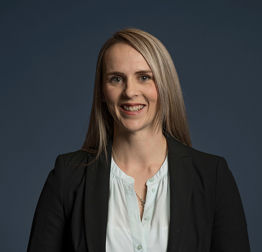The highly anticipated Therapeutic Products Bill (Bill) was introduced to Parliament on 30 November 2022. The Bill will regulate medicines, active pharmaceutical ingredients, medical devices, and natural health products to protect and improve the health of New Zealanders by providing for the acceptable safety and quality of those products. For general information about the Bill, please see our 'Therapeutic Products Bill set to improve the health of all New Zealanders' article.
An important new category of therapeutic products that the Bill will regulate is software as a medical device. This will impact on the development, distribution and advertising of software that is a medical device.
Software as a medical device
Under the Bill, medical devices include 'software as a medical device'. Software as a medical device is either:
- Stand alone software that is intended to be used in relation to humans for a 'therapeutic purpose' (provided that the therapeutic purpose is not merely incidental to the software's primary purpose) or
- Software that is intended to be used to augment a product that is not a therapeutic product by making use of that product's functions, sensors, or other components, and the product and software together constitute one therapeutic product.
While the regulation of software as a medical device is new to New Zealand, it has been regulated in many developed countries (eg the USA, Australia and the EU) for some time now.
As is standard across many jurisdictions, software that is used for the purpose of preventing, diagnosing, monitoring, treating or curing, a disease, ailment, or injury constitutes 'software as a medical device' under the Bill. Examples of such software include:
- Software that allows a smartphone to view images obtained from an MRI for diagnostic purposes
- Computer-aided detection software that performs image post processing to help detect breast cancer.
The definition of 'therapeutic purpose' is quite broad in the Bill. In particular, 'maintaining or promoting human health' (or any purpose 'connected with' that purpose) is a therapeutic purpose. This means that some software that is for the therapeutic purpose of 'maintaining or promoting human health' (or any purpose 'connected with' that purpose) may be treated as software as a medical device. This could include, for example:
- Consumer health apps
- Software within wearable devices that promotes and maintains health (by, for example, monitoring the wearer's heart rate and sending the wearer health related notifications)
- Patient apps and portals provided by medical practices
- Practice management software
- E-prescribing software.
Those types of software are not generally regulated as medical devices in other jurisdictions. For example, in Australia, the following types of software are specifically excluded from the scope of software as a medical device in both primary and secondary legislation:
- Consumer health and wellness products (which may be software or a combination of non-invasive hardware and software or wearables), that do not make claims about serious diseases or conditions
- Software embedded in delivery of health services such as clinical workflow management software.
What will the new requirements be for 'software as a medical device'?
If software falls within the definition of 'software as a medical device' under the Bill then:
- That software product will generally need a market authorisation (granted by the new Therapeutic Products Regulator) before the software product can be imported into, supplied in, or exported from New Zealand (subject to some exceptions in the Bill)
- 'Developing' those software products will be considered to be 'manufacturing' a 'medical device' under the Bill, and will generally require a licence or permit.
For more information on the proposed regulation of medical devices, and impact that that will have on medical device businesses, see our 'Major changes on the horizon for medical device businesses' article.
However, like Australia, regulations could be made under the Bill in the future to exclude some types of software from being regulated as therapeutic products.
What's next for the Bill
The closing date for submissions on the Bill is 5 March 2023. If you have questions about the Bill, would like to learn more about it or would like assistance with making a submission, please contact one of the authors listed at the top of this page.




